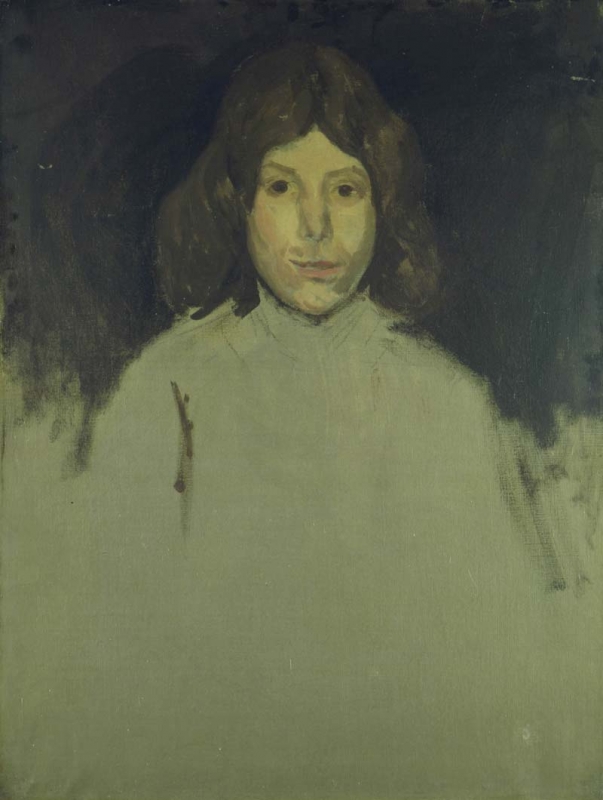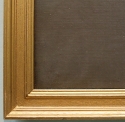Home > Catalogue > Browse > Study of an Italian Boy << >>
Technique
It is on a fine plain weave canvas, with 20-25 threads/cm, which was commercially prepared, being primed in grey, possibly over an off-white base. Patches of priming show through the paint, for instance between the brushstrokes in the face. The regular texture of the threads showing through the priming was apparently approved, and used to good effect, by the artist. 1
The boy's head and shoulders were sketched in roughly, possibly with a graphite pencil or crayon. The modelling of the face was left unfinished. The eye sockets were painted extremely thinly. Professor Townsend described the medium and technique:
'the paint is thinned but did not run. It is glossy in thicker areas, and it may be a megilp-type material. The use of such a material would account for the lack of drips and runs, and it would have dried fast – good for sketching or the early stages of a portrait. The shadows of the eye are made by using less paint.' 2
The portrait is clearly unfinished, and the lower half of the canvas is bare.
Conservation History
Professor Townsend observed:
'It is on the original stretcher, with the original fixings, tacks on the tacking margin, and a well-trimmed canvas that does not have any spare fabric on the reverse. Its significant brown discolouration suggests a poor quality fibre rather than linen.' 3
The canvas has not been lined and as a result is slightly brittle and fragile. There are minor distortions in the canvas, but the support is structurally sound. 4
Frame
It is now in a Whistlerian Flat frame, dating from the 1920s. 5
At one time the painting was put in an older frame, painted with a fish-scale pattern on the right side, which fitted this painting but was definitely not made for it originally, since it dates from over twenty years earlier.
Notes:
1: Condition report by Clare Meredith, 21 May 2001, Hunterian files. Professor Joyce H. Townsend, Tate Britain, Examination Report, April 2017.
2: Townsend 2017, op. cit.
3: Townsend 2017, op. cit.
4: Meredith, 2001, op. cit.
5: Dr S. L. Parkerson Day, Report on frames, 2017. Parkerson 2007 [more].
Last updated: 22nd October 2020 by Margaret








